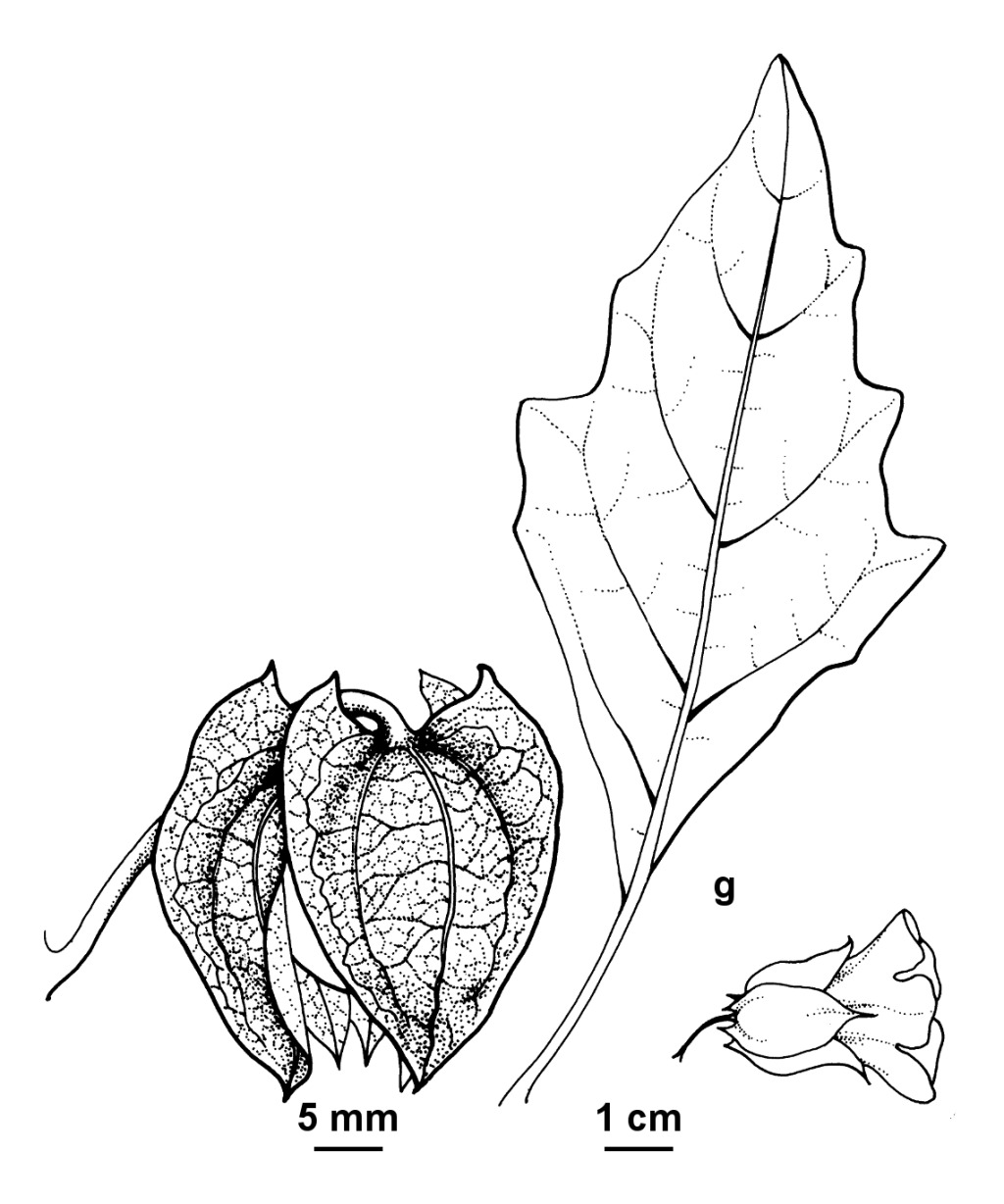Nicandra physalodes
(L.) Gaertn. Apple of PeruAnnual herb to c. 2 m high. Leaves variable, narrow- to broad-ovate, mostly 2–15 cm long, 1–6 cm wide, apex acute or obtuse, base cuneate, mar-gins usually irregularly toothed; petiole mostly 1–6 cm long. Flowers on pedicels 6–24 mm long; calyx 7–22 mm long, lobes with margins appressed to form longitudinal wings, often mucronate at apex and on basal tips; corolla 12–23(–30) mm long, lobes obtuse or slightly notched; staminal filaments 3–3.5 mm long, pubescent at base; style 3–6 mm long. Fruiting calyx papery, reticulate-veined; berry globose, usually 11–22 mm diam., pale yellow; seeds 1.2–2.1 mm long, pitted, brown. Flowers mostly summer and autumn.
MuM, GipP, EGL, HSF. Also naturalised WA, SA, Qld, NSW, Tas. Native to Peru. A widely cultivated ornamental that is sparingly established in Victoria.
Jeanes, J.A. (1999). Solanaceae. In: Walsh, N.G.; Entwisle, T.J., Flora of Victoria Vol. 4, Cornaceae to Asteraceae, pp. 332–365. Inkata Press, Melbourne.
 Spinning
Spinning




